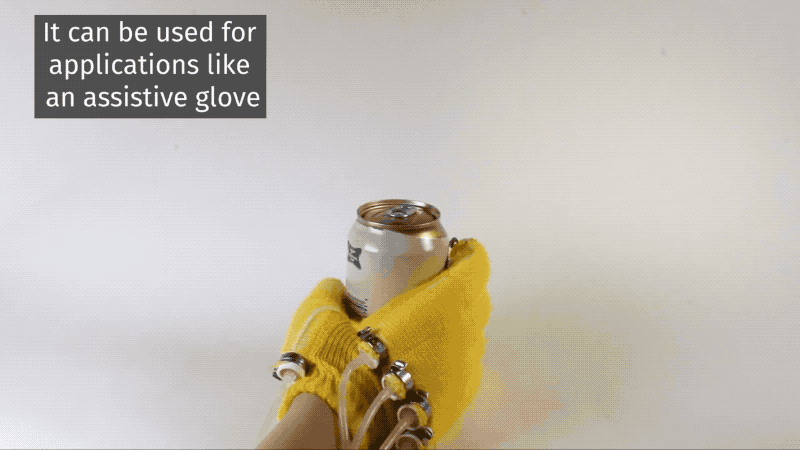The MIT CSAIL team calls them “banana fingers,” and I can’t really disagree. They’re oblong and bright yellow, but as visually arresting as they are at first glance, they do serve a function. The glove is effectively a kind of soft robotic. Its uses pneumatic actuation (air power, if you will) to serve as an assistive wearable.
If you, say, have an issue with muscle control, the gloves could, quite literally, help you get a grip by pumping air in to help them open and close. One of the things that makes the project extra interesting is the use of conductive yarn, which gives the gloves a kind of built-in sense of touch.
The glove was created with a system called “PneuAct” — a portmanteaux of pneumatic actuator — detailed in a new paper. It utilizes an autonomous machine knitting system.
“A human designer simply specifies the stitch and sensor design patterns in software to program how the actuator will move, and it can then be simulated before printing,” MIT writes. “The textile piece is fabricated by the knitting machine, which can be fixed to an inexpensive, off-the-shelf rubber silicone tube to complete the actuator.”
Banana fingers are one of a handful of different prototypes created by the lab. The list also includes a standalone soft robotic hand and a quadrupedal robot that uses air pressure to walk. Extrapolating out futher, CSAIL envisions more complex systems, including things like exoskeletons. The wearable soft robotics could be used to assist with moving other body parts.

Image Credits: MIT CSAIL
“Using digital machine knitting, which is a very common manufacturing method in today’s textile industry, enables ‘printing’ a design in one go, which makes it much more scalable,” the paper’s lead, Yiyue Luo says. “Soft pneumatic actuators are intrinsically compliant and flexible, and combined with intelligent materials, have become the backbone of many robots and assistive technologies — and rapid fabrication with our design tool can hopefully increase ease and ubiquity.”
Exoskeletons have become an increasingly popular category of robotics in recent years, with a focus on work and mobility. While a majority of them utilize harder material, many startups have begun focusing on softer versions made from textiles that trade overall strength for a design that works more comfortably with the human form.















 English (US) ·
English (US) ·